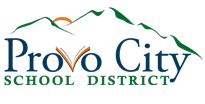Last modified: September 26, 2023
Policy No. 2100 Increasing Academic Performance
The Provo City School District Board of Education believes that continuous improvement paired with a standing commitment toward increased student achievement is the paramount duty of the district. Therefore, the Board has established the expectation for short-term and long-term growth in student achievement, using both quantitative and qualitative measures.
Establishing Targets
The Board expects the following criteria to guide the establishment of data based student achievement targets:
- Where state standards and averages are established, all performance throughout the district will be at state averages as a minimum baseline.
- Steady annual growth is expected.
- Aggressive yet reasonable percentage-point growth is expected in each measured category with the following scaled outline as a guide:
- For scores/data in the 60% range, a minimum 3 percentage-point growth goal per year is expected.
- For scores/data in the 70% range, a minimum 2 percentage-point growth goal per year is expected.
- For scores/data in the 80% range, a minimum 1 percentage point growth goal per year is expected.
- For scores/data in the 90% range, a minimum .5 percentage point growth goal per year is expected, along with studying remaining issues related to sub-groups and any under-performance in those categories.
- For scores/data in the upper 90% range, maintaining the high levels of achievement with students moving into subsequent grades should be the focus of the growth goals.
Growth goals in student achievement must include serving all students in the school, program, grade level, subject area, etc. and must address the following grouping distinctions of students:
- All students;
- Students of each major racial and ethnic group;
- Economically disadvantaged students;
- Students served in Special Education;
- Students for whom English is a Second Language;
- Students who are meeting high performance standards: in the upper 20% and are capable of more demanding/challenging work.
Tracking Growth in Student Achievement
The Board supports the continuous collection and reporting of student data, from district-wide through to per school and classroom statistics. District-wide data will generally be reported via the online “District Progress Report.”
Professional Development
The Board has an interest in supporting strategies that will assist in improved instructional methods and techniques, and will result in improved student learning. The superintendent is charged with the responsibility to direct a process by which effective training is provided for staff in the district, especially for principals and teachers. The roots of the training plan processes will be:
- Research-proven effective teaching pedagogy and methodology;
- Best and Replicable practices;
- Sufficient time and resources to deliver the professional development;
- Remediation efforts to assist teachers struggling to utilize the professional development practices at hand;
- Follow-up by supervisors to ensure effective implementation;
- Collection of data, where possible, to verify impact on student learning; and
- Being part of a long-term professional development direction district-wide, including PLCs, over the course of several years.
Budgetary Priorities
The Board wishes to establish as a first consideration the allocation of resources to support increases in student learning. The budgetary priorities recommended by district administration and approved by the Board of Education will consider direct and indirect funding of programs and activities in light of improving student learning.
All Support Programs are part of Student Achievement Improvement Planning
The Board believes that all operations in the district (Personnel, Curriculum, Finances, Transportation, Technology, Student Services, Custodial/Maintenance/Capital Projects, etc.) play a role in the work to improve student achievement. The Board encourages district administrators to review, identify, and when possible, remove barriers in all operational aspects throughout the district (while adhering to federal, state, and other mandates) to improve support for continuous improvement in student achievement.
Approved by Board of Education
September 10, 2013
